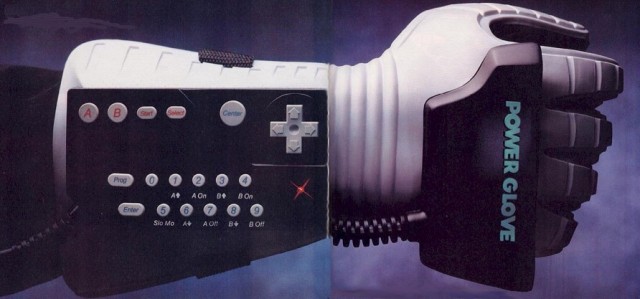
Gamers today certainly live in a peripheral age: when some of the best-selling titles are ones that require plastic guitars, drums and turntables, and with Nintendo making a mint on balance board-required Wii Fit, it’s hard to enter a gaming store or even one’s home without finding a hunk of plastic designed, for better or for worse, to “enhance” gameplay.
As will be illuminated, however, these accessories are nothing new and have found themselves immersed throughout the history of video games. We’ll be looking at the good, the bad, and the ugly of these peripherals for Nintendo systems throughout the ages. The good we will consider to be accessories that did well to promote gameplay, and have a lasting reputation; the bad are not bad per se (just included for the sake of adhering to the title of the amazing Eastwood western), just those that may not have hit their stride but have found themselves fondly thought of either through nostalgia or by die-hard gamers; and finally, the ugly are those that can be filed under “what on earth were they thinking?!” Finally, for the sake of this article, we’ll be considering one entry from each system for each of the descriptors.
THE GOOD
NES Zapper (NES)
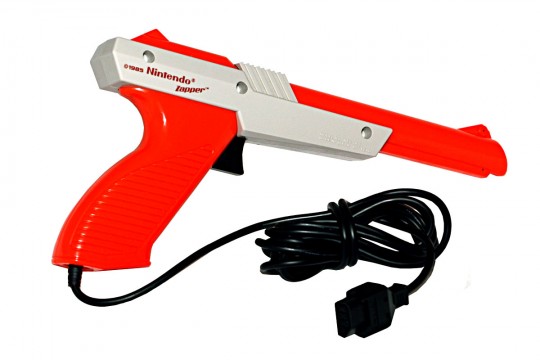
Everyone’s favorite light gun. Released alongside the system in the United States, the NES Zapper’s original color was a dark gray, but later colored the bright orange most may associate with the gun to comply with government regulations for “toy guns.” The function of the device was simple: point and shoot ducks, clay pigeons, or whatever else the game has you destroying. It featured a futuristic ray-gun design that seemed to be directly lifted from science fiction– but no, this wasn’t fiction. This was reality, a loud “clang” when you shot and all, and it was wonderful.
Super Game Boy (Super NES)
For those who wanted Metroid II: Return of Samus and The Legend of Zelda: Link’s Awakening on a home console, this was the solution. It was an adapter that fit into the cartridge slot of the Super NES, and allowed for Game Boy cartridges to be played on the big screen. Not only could it play all Game Boy and select Game Boy Color games, but it also had specialized borders for the emulated Game Boy screen and would map the various shades of gray to color. Some Game Boy titles could also take advantage of the Super NES hardware, such as extra sound output, unique borders for certain titles and utilization of the second Super NES controller for multiplayer.
Rumble Pak (Nintendo 64)
While paling in comparison to what controllers offer today in terms of force-feedback, this is what started it all. Plugging into the controller’s memory slot, the Rumble Pak would vibrate based upon what was going on in select games that supported the device. While bulky, heavy, and required two AAA-batteries, it’s an excellent example of Nintendo creating an industry standard.
Game Boy Player (GameCube)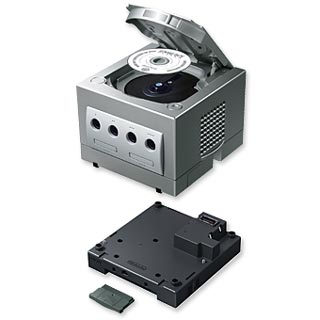
While it may just have been an update to the aforementioned Super Game Boy, it’s still the best of the GameCube’s peripherals, and it brought awesome updates with it. Sorely lacking from its older brother was the extension port for multiplayer purposes, and was brought to the Game Boy Player. If one felt so inclined, the GameCube-Game Boy Advance cable could be used to connect a Game Boy Advance for the sake of controls. While Game Boy Video may not have seen supported, and titles with built-in rumble paks or motion sensors may not have made the most sense for use for gameplay with this console add-on, it still serves as a great means to play great games on a great big screen.
Wii Balance Board (Wii)
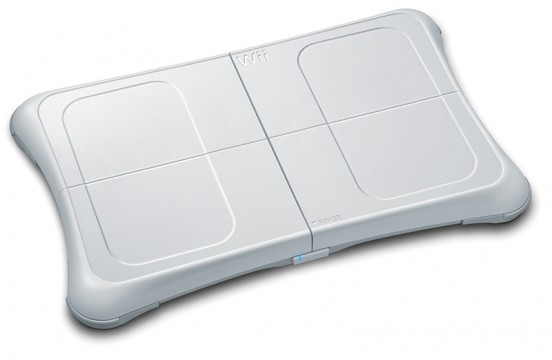
By this point, who doesn’t know of the Balance Board? While it could still be argued as being a gimmick, it’s a damned successful one. Nintendo not only wants control of the gaming market and your wallets, but also your body; with both hands tied up with the Wii Remote and Nunchuck, the next logical takeover would be one’s feet (though some games, such as Rayman Raving Rabbids TV Party, encouraged the use of the device with one’s buttocks). Wii Fit and its upgrade Wii Fit Plus have sold like hotcakes, and even fitness centers are employing the use of Wii and its balance board. If bringing together seemingly orthogonal worlds isn’t an example of success, I’m not quite sure what is.
Game Link Cable (Game Boy, Game Boy Advance)
First, Nintendo brought games successfully to the road with Game Boy. Next, they allowed for multiple players, which became a hallmark in homes across the world. While we would view this as immensely cumbersome today, this also served as a milestone in handheld gaming. Ask any Pokémon fan from the Red and Blue era, and I guarantee they used this simple cord to catch ‘em all.
THE BAD
Power Pad (NES)
Dance Dance Revolution, eat your heart out. The spiritual precursor to the dance pads that have invaded arcades and living rooms everywhere, the Power Pad was used with just a handful of games, including World Class Track Meet. A quick note to creator Bandai: running in place and slamming your feet to the floor as hard as possible to ensure contact does not make for fun gameplay. But it certainly made for a great idea.
Super NES Mouse (Super NES)
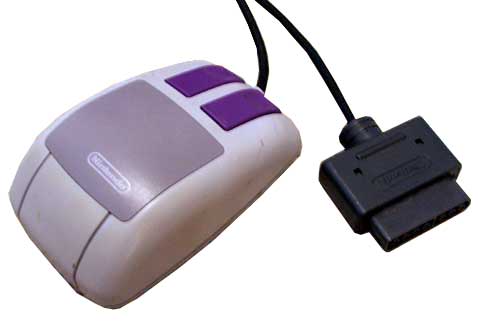
It’s difficult for me to put this accessory in “The Bad” section, given that Mario Paint is one of my fondest memories. Then, in trying to think of other titles that supported the Super NES Mouse, it suddenly becomes less difficult. While several games supported the device, none met the success with it as Mario Paint. The concept of the device is also relatively simplistic, featuring only two buttons and having been bundled with a hard plastic mouse pad that broke within hours of use.
64DD (Nintendo 64)
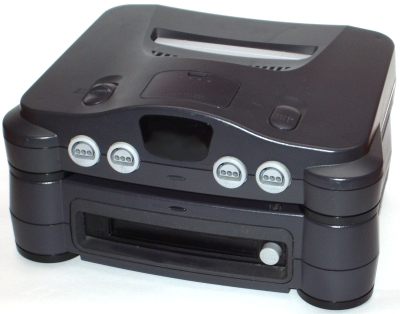
Ask anyone who was into gaming during the Nintendo 64 era: they will have heard of the ill-fated 64DD. The add-on was announced before the launch of Nintendo 64, and plugged into the bottom of the system to allow use of 64 MB disks for expanded data storage. Titles such as Mario Artist, Earthbound 64 and The Legend of Zelda: Master Quest were in development, and while never seen stateside, the add-on did see a failed release in Japan at the end of the console’s life. Some of its titles were canned, such as the aforementioned Mario Artist and a title that eventually became a little franchise known as Pokémon, while others were brought to cartridge format or, in the case of Master Quest, GameCube.
DK Bongos (Gamecube)
Before Guitar Hero reared its franchise-wielding head, there were bongos. But these weren’t just any bongos, no! They looked like they were taken right out of the Donkey Kong universe and thrown into your lap for some hard drummin’ action. While only four games were released that supported the bongos, and only three outside of Japan, they were still solid titles that used the controllers well.
Donkey Konga was a rhythm title that had you slamming the drums to cues on-screen. However, it’s Donkey Kong: Jungle Beat that really made use of the controller best, offering stellar and addictive gameplay, causing you to stop playing only when your arms could not be lifted anymore. The developers of Jungle Beat would go on to create one of the greatest games of the current generation: Super Mario Galaxy. Donkey Kong: Barrel Blast was originally designed for the bongos as well, but later ported to Wii with Wii Remote and Nunchuck controls to lackluster reviews, demonstrating how there’s no effective replacement for a set of bongos.
Wii MotionPlus (Wii)
Wii MotionPlus works. It’s effective in doing what it does: more effectively capture complex motion from the player. That’s all good and well. What’s not necessarily okay is how the Wii Remote requires this for more accuracy in the first place– one would hope that the technology would be there, something Nyko has already responded to with their Nyko Wand+. Not only that, but only a handful of games support the device, with only two available on the market today requiring it. It’s some great tech that allows for some fantastic mapping, that much is certain. Don’t be surprised if this fades into history when it will hopefully be built into a remote in the future.
Game Boy Camera (Game Boy)
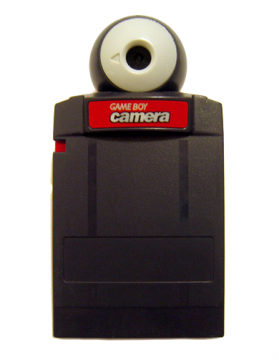 This was a peripheral of ultimately untapped potential. Plugging into a Game Boy, it allowed you to– you guessed it– take pictures. While certainly not viewed as a viable threat to the likes of Canon and Kodak, it did prove to be popular, given the built-in games and editing features. It also held the Guinness World Record for smallest digital camera for a period of time.
This was a peripheral of ultimately untapped potential. Plugging into a Game Boy, it allowed you to– you guessed it– take pictures. While certainly not viewed as a viable threat to the likes of Canon and Kodak, it did prove to be popular, given the built-in games and editing features. It also held the Guinness World Record for smallest digital camera for a period of time.
The problem with the device is knowing what else it could have done, had developers chosen to use it. For example, Perfect Dark was set to use the Transfer Pak along with the Game Boy Camera for gamers to take pictures of themselves, then upload their faces onto a character model in multiplayer. However, after the tragedy at Columbine High School, the idea was quickly scrapped. Now cameras are practically built into everything, including the latest handheld from Nintendo, the DSi, as well as its successor 3DS, which utilizes two cameras to allow for the taking of 3D pictures. My, how far we’ve come.
THE UGLY
Power Glove (NES)
You knew this was coming. The Power Glove often finds itself atop many “worst of” lists, and any list mentioning video game accessories will include it in some way, shape or form. An officially licensed product, the Power Glove was designed to map human hand movements on the television screen; the problem with it is that it failed miserably at doing so. The controls were difficult and the unit itself was imprecise. Perhaps the primary reason it’s remembered so well today is due to the movie The Wizard, a feature-length Nintendo commercial starring that kid from Wonder Years and The Princess Bride, featuring it prominently as a controller of choice for the movie’s antagonist, who perhaps describes it best in stating “I love the Power Glove. It’s so bad!” Really, really bad.
Extertainment System (Super NES)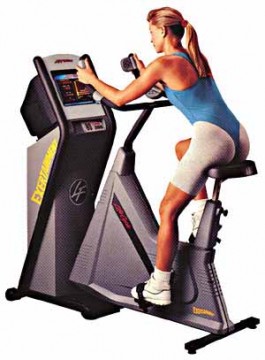
You think shelling out $90 for Wii Fit and a balance board is bad? Try $3,500 for a bike. It was essentially an exercise bike that plugged into a Super NES, and only worked with a select few games; that is, you couldn’t exactly play Super Mario Kart with this thing.
Voice Recognition Unit (Nintendo 64)
The VRU was, in essence, a bulky microphone for Nintendo 64. However, as was the case for its landmark title Hey You, Pikachu!, the accessory was designed to recognize commands that you issued your tiny little Pokémon, to which it would dutifully respond. That is, if the thing actually worked. Only one other game was developed for the tech, and was never seen stateside. If it were released, I’m sure it wouldn’t sell either.
Broadband/Modem Adapter (GameCube)
Technically, this device worked as designed: for select games, it allowed online play and supported LAN connectivity. Why is it included in “The Ugly” then? Because all this device really served to do was tease and upset Nintendo gamers the world over. Only four titles ultimately went online– the only three released in America were all Phantasy Star iterations– and only three allowed for LAN connectivity. If nothing else, it helped to lower one’s expectations when it comes to online offerings from Nintendo.
Wii Speak (Wii)
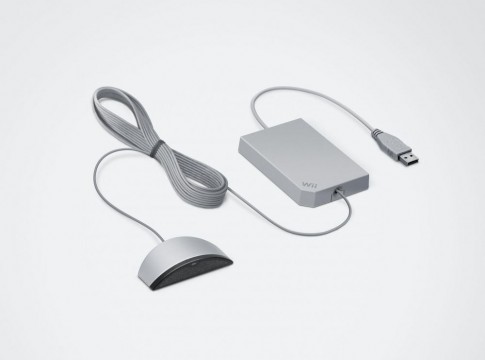
As it stands, only eight titles support Nintendo’s latest console voice attempt, with only two in the works for release later this year. And who can blame the developers? Nowhere near as effective as a headset, Wii Speak was Nintendo trying to please two incompatible groups: families that only want G-rated content and hardcore gamers. Here’s hoping that PDP’s announced headset will wash out the nasty aftertaste this device has left on the collective tongue of Nintendo gamers.
e-Reader (Game Boy Advance)
No, this isn’t a device similar to Amazon’s Kindle or Barnes & Noble’s Nook. Rather, this large and obtrusive device plugged into both the cartridge slot and the game link cable port of a Game Boy Advance and allowed you to scan select cards with a stream of dots containing encoded data. While NES games were made available for the device via a set of five cards, and Animal Crossing capitalized on the Game Boy Advance’s ability to connect to the GameCube, this add-on was a futile attempt to merge the Pokémon card craze and the gaming world. The result? A device that was quickly abandoned and cast into obscurity.
THE UNMENTIONED
Some honorable mentions include every Nintendo fan’s favorite robot R.O.B. for NES, now embraced by Nintendo in their titles Mario Kart DS and Super Smash Bros. Brawl, and the Super Scope 6 for SNES, also seen in the aforementioned fighting title. Finally, the Expansion Pak for Nintendo 64 gave the system a bit more breathing room by doubling the available RAM from 4MB to 8MB. Titles such as Donkey Kong 64 and The Legend of Zelda: Majora’s Mask required it to be played on the system; others, such as Perfect Dark and StarCraft 64, saw more game content unlocked with the Pak.
Despite never obtaining its full momentum, the Transfer Pak for Nintendo 64 is also worth mentioning; it was a device that allowed transferring of data from select Game Boy and Game Boy Color titles to Nintendo 64 titles, such as Pokémon Gold and Silver for Pokemon Stadium 2 and Perfect Dark. The GameCube Microphone demonstrated how Nintendo just doesn’t seem to understand console voice work, making zero-for-three in terms of a success rate.
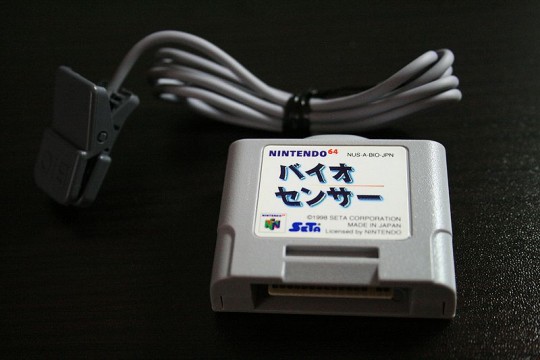
The Nintendo 64 Bio Sensor can be viewed as a precursor to Wii’s announced Vitality Sensor. Only one game was made for the peripheral– Tetris 64— and it never saw the light of day stateside. The Bio Sensor fit into the accessory port on the controller, and a cord from the unit connected to the player’s ear, allowing for the heart rate to be transmitted to the title, and affect gameplay accordingly. Such an application, one hopes, will be considered for Wii’s counterpart.
Finally, in terms of full-on oddity, Bandai released the Game Boy Pocket Sonar in Japan, and it functioned just as its name implies: it located fish underwater via sonar.
What do you think? Did we forget your favorite– or least favorite– video game accessory? Or did the Power Glove really allow you to start “playing with power”? Sound off below or in our forums. Until then, play on!




 ShareThis
ShareThis







I don’t really know what you mean by good, bad and the ugly. Is it only because they failed to sell, that made them bad? Or, was it the lack of games? I mean, the Power Glove sucked to use, but that’s only because it was ahead of it’s time and the tech wasn’t mature enough yet, at least not at mass price points. The 64DD just never had a chance, but in fact, was also a great idea for being able to write to the game itself, and not in a memory-only way. As for Wii Speak, you gotta give it to Nintendo for trying something new. I know I get annoyed from wearing MS’s and Sony’s headsets after a few hours, and this way, EVERYONE can talk into one mic. I know it doesn’t work as good as it could. but on paper, it’s a great idea.
As for the SNES Mouse, this is amazing to be a bad thing because everyone touts how much better PC games are with a mouse, than console gaming…
Most of these peripherals you name bad or below due to lack of games, but isn’t that the fault of the games not being made? I mean, the Balance Board has few games for it and you labeled that as good…
What they’re saying is “Good” are the hits, “Bad” are the silent hits, not selling or doing too well by developers, and “Ugly” ranges from “didn’t work out” to “WTF?!”
I’ll never forgive myself for getting rid of my GBA Player, which I sold alongside my GC when I got my Wii. And while the Power Glove didn’t work, it totally looked cool! Nintendo should release a Power Glove II incorporated with Wii Motion Plus! For old times sake (I love nostalgia)!
I’ve definitely never heard of the Bio Sensor before, though it makes it less surprising that Nintendo, via its Vitality Sensor, is going to try and make a comeback for that kind of crazy accessory.
As for the others … man, the Game Link Cable definitely seemed like a crazy idea back when I was a kid. Just imagining all those Pokemon going through the wires– it’s still crazy to me, after all these years.
What about the E-reader card system for GBA? That looked pretty cool but it never came to Europe *grumbles*
“What about the E-reader card system for GBA?”
Europe was lucky then.
It’s on there. But it’s basically only useful in 1-2 games.
Oh yeah. Super GameBoy didn’t make it on the list!?!?
The Super Gameboy’s number 2, right behind the zapper.
Oops, a formatting error made the Super Game Boy title look really small. Fixed!
You understated the Super Game Boy’s greatness? HOW DARE YOU!!! :P